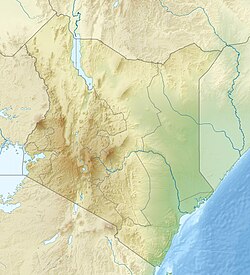Background
The site is located 50 Kilometres off the Lodwar – Kalokol highway, and it is easily visible on 30 metres (98 ft) from the road. The Kalokol Pillar Site contains 19 basalt pillars which are surrounded by a circular formation of stones. A number of other pillar sites surround Lake Turkana as well and date to the same time period; Lothagam North and Manemanya, for example, are communal cemeteries. These sites were likely built by the region's earliest herders. [2] Another burial site with stone cairns, Namoratunga I, [3] [4] also known as Lokori, does not have stone pillars. [5] [6] [7]
Archaeologists Mark Lynch and L.H. Robbins described the Kalokol Pillar Site in 1978 and identified it as a possible archaeoastronomical site. [8] Lynch believed the basalt pillars tie the constellations or stars to the 12-month 354-day lunar calendar of Cushitic speakers of southern Ethiopia. The pillars were said to align with seven star systems: Triangulum, Pleiades, Bellatrix, Aldebaran, Central Orion, Saiph, and Sirius. Other archaeologists have reanalyzed the archaeoastronomical evidence, [9] and an older radiocarbon date from the Kalokol Pillar Site now calls into question these interpretations. [1]
This page is based on this
Wikipedia article Text is available under the
CC BY-SA 4.0 license; additional terms may apply.
Images, videos and audio are available under their respective licenses.


